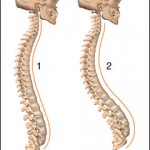
One of the main focuses of our training and our exercise programs at Inspire Fitness for Wellbeing is to prevent and correct poor posture and faulty biomechanics. Poor posture is caused by a number of different factors including a poor workplace set up, an imbalance in your exercise training program, poor gait (walking/running pattern), overuse and tightness in muscles. In order to correct the damage from poor posture, Personal Trainers and Exercise Physiologists at Inspire Fitness for Wellbeing employ a number of different techniques, including manual muscle release techniques, corrective stretching, and corrective strength training. However, prevention is the most important cure!
Causes of Low Back Pain when sitting
One of the most common causes of low back pain (LBP) is prolonged sitting. Technological and economic developments over the past 30-40 years in western society has led to a significant increase in the proportion of our workforce sitting for prolonged periods at an office chair, along with a greater amount of time spent sitting – mostly in front of a computer. This dramatic increase in the amount of time spent sitting has led to a greater potential within the population of developing LBP.
The lumbosacral joint is the junction of your lower back and your sacrum (pelvis), and is one of the most common sites of disc lesions in the lower back. Lumbosacral pain is the single most common cause of disability in persons under 45 years of age, with back pain resulting in about 40% of absences from work. As computer and desk work continues to be an integral part of most of our working environments, it is therefore necessary for us to give you strategies to help reduce your risk of LBP arising from extended periods of sitting. Poor seated posture, sitting behavior, and seat design are thought to be contributing factors to LBP.
The body’s responses to sitting are complex and involve a good knowledge of the anatomy and physiology of the sitter, as well as the structure of the seat, desk and the environment. If the muscles of your back are overactive, this means that they are working too hard to keep you in a seated position. In these circumstances, your back muscles then apply undue pressure to your spinal discs. This pressure accumulates over time, and can cause the discs to creep, potentially leading to a rupture or placing pressure on the nerves in your spinal column. It has been found that when individuals perform desk work, there is a tendency to adopt a flexed lumbar spine posture. If this posture is sustained, it can result in increased lumbar flexion stiffness. This means that over time, we reduce the mobility of our lower spine, as the joints become immobile. This can be seen in Figure A; our tendency is to slump when sitting at a desk, which creates a dangerous changed position for the spine.
A task that requires us to maintain a constrained flexion posture, combined with increased joint stiffness, can stimulate pain receptors in our posterior spinal ligaments. Thus, when we continue to slump or maintain incorrect sitting posture, we will experience lower back stiffness and pain. In addition, there is a significant increase in the risk of injury from forward-bending movements that are performed after prolonged sitting, as a result of increased lower back stiffness.
 Figure A. 1) Normal spinal posture; 2) Flexed lumbar spine. This position is potentially dangerous if maintained for a prolonged period of time. Flexion is the decreasing of the distance between two joints, or in this case, the bending forward of the back.
Figure A. 1) Normal spinal posture; 2) Flexed lumbar spine. This position is potentially dangerous if maintained for a prolonged period of time. Flexion is the decreasing of the distance between two joints, or in this case, the bending forward of the back.
How to reduce your risk of low back pain when sitting at a desk
The aforementioned mechanisms of injury can be avoided by adhering to the following guidelines:
- Lean back onto your chair’s lumbar support to gain stability and reduce the muscle activity in your back.
- Adjust your seat height so your thighs are parallel to the floor while sitting. Avoid having your knees above your hip level, to reduce thoracic kyphosis (curvature of the upper spine, or “hunchback”). This can be assisted by keeping your feet firmly planted on the floor or on a foot rest.
- Bring your computer monitor close enough so that the characters on the screen are legible in an upright position. This will reduce the need for you to lean forward, which would strain your neck and back!
- Position all your frequently-used items close to you to reduce the need for you to lean forward.
- Take a break away from the computer every 40- 45 mins to help reduce muscular pain and fatigue.
- Adjust your chair’s backrest to allow you to sit comfortably without excessive forward leaning.
- All pieces of your workstation should be fully adjustable. For example, the desk, backrest of the chair, and arm rests of the chair.
If you spend a long period of time sitting at a poorly-orientated workstation, then you may be at risk of, or already suffering from the effects of such unsafe postures. Therefore, it is important that you identify any workstation deficits as highlighted here. Combining the expertise of our corrective exercise practitioners with the adoption of the practical strategies identified above, you can remedy musculoskeletal issues which may present from the seated lifestyle.
Furthermore, here are additional strategies for reducing symptoms of low back pain. Understanding your pain and then developing strategies for eliminating and preventing low back pain is essential for your ongoing wellbeing.
